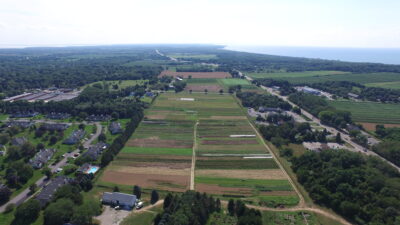Blog
On Pollinators: Monarch Butterfly Northward Migration Has Started
By Yvette DeBow-Salsedo
The annual migration north of the Monarch butterfly is underway. We expect they will arrive in our area in mid-to-late May. The Monarch butterfly population continues to be under stress … but these and other pollinators are an important part of our ecosystem and our local food production.
![block.image[0].title](/assets/images/monarch-emerge-qhf.JPG)
At Bridge Gardens, we have a few kinds of milkweed at the gardens. Monarch caterpillars only feed on the common milkweed. We have planted that on the south side of the gardens between the community and rose gardens.
A note of caution from Rick: the common milkweed is fast growing and can overtake your gardens. For smaller home gardens, you can focus on the plants that provide nectar to the adults.
Adult Monarchs will feed on many types of nectar plants, including swamp milkweed and other perennials like cone flowers, tall verbena, and butterfly bush.
At Quail Hill Farm, to help support the Monarch and other important pollinators, we planted the roadside fields on Deep Lane (Hurricane Hill) with milkweed to provide a larger area of food for the Monarch caterpillars. Milkweed is also growing throughout the farm, along with buckwheat, butterfly weed, yarrow, and goldenrod.
We are also installing cover crops on farm fields that are in rotation this year throughout the North and South Forks to provide additional habitat for the Monarch and other pollinators. The mixes in these cover crops include sunflower and buckwheat, which attract and feed the pollinators we depend on.
Interested in learning more and adding plants to your gardens that will support Monarchs and other pollinators? Here are a few resources:
- U.S. Forest Service: Celebrating Wildflowers: Monarch Butterfly
- Northeast Monarch Nectar Plants: produced by the Xerces Society, in partnership with the Monarch Joint Venture and National Wildlife Federation.
- Long Island Native Plant Initiative
![block.image[0].title](/assets/images/26.Butterfly-and-bee-088F5.jpg)
photo by Amagansett Studios



